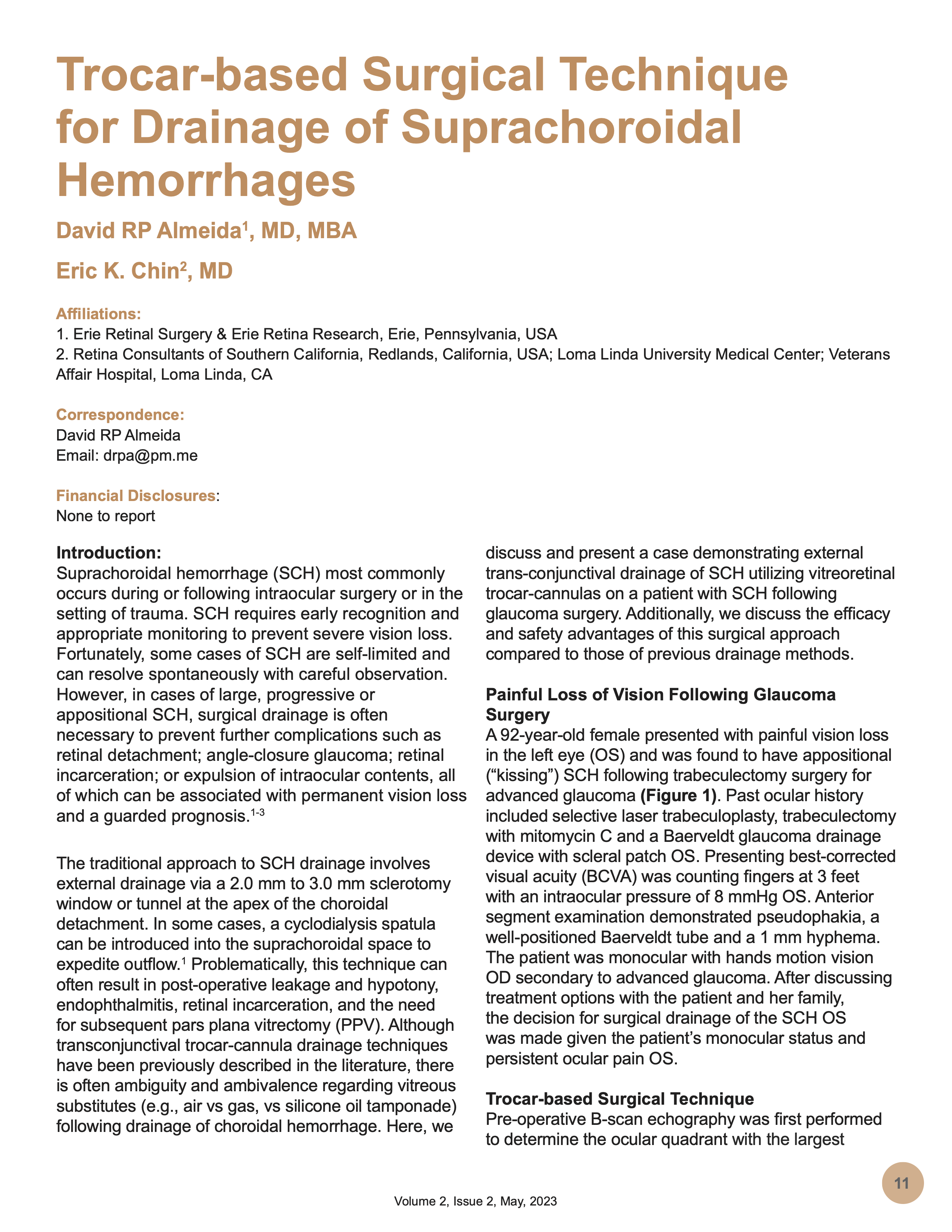Trocar-based surgical technique for drainage of suprachoroidal hemorrhages
DOI:
https://doi.org/10.58931/cect.2023.2226Abstract
Suprachoroidal hemorrhage (SCH) most commonly occurs during or following intraocular surgery or in the setting of trauma. SCH requires early recognition and appropriate monitoring to prevent severe vision loss. Fortunately, some cases of SCH are self-limited and can resolve spontaneously with careful observation. However, in cases of large, progressive or appositional SCH, surgical drainage is often necessary to prevent further complications such as retinal detachment; angle-closure glaucoma; retinal incarceration; or expulsion of intraocular contents, all of which can be associated with permanent vision loss and a guarded prognosis.
The traditional approach to SCH drainage involves external drainage via a 2.0 mm to 3.0 mm sclerotomy window or tunnel at the apex of the choroidal detachment. In some cases, a cyclodialysis spatula can be introduced into the suprachoroidal space to expedite outflow. Problematically, this technique can often result in post-operative leakage and hypotony, endophthalmitis, retinal incarceration, and the need for subsequent pars plana vitrectomy (PPV). Although transconjunctival trocar-cannula drainage techniques have been previously described in the literature, there is often ambiguity and ambivalence regarding vitreous substitutes (e.g., air vs gas, vs silicone oil tamponade) following drainage of choroidal hemorrhage. Here, we discuss and present a case demonstrating external trans-conjunctival drainage of SCH utilizing vitreoretinal trocar-cannulas on a patient with SCH following glaucoma surgery. Additionally, we discuss the efficacy and safety advantages of this surgical approach compared to those of previous drainage methods.
References
Rezende FA, Kickinger MC, Li G, Prado RF, Regis LG. Transconjunctival drainage of serous and hemorrhagic choroidal detachment. Retina. 2012 Feb 1;32(2):242-9. DOI: https://doi.org/10.1097/IAE.0b013e31821c4087
Tarantola RM, Folk JC, Shah SS, Boldt HC, Abràmoff MD, Russell SR, Mahajan VB. Intraoperative choroidal detachment during 23-gauge vitrectomy. Retina. 2011 May 1;31(5):893-901. DOI: https://doi.org/10.1097/IAE.0b013e3181f4429b
Ali BYFS, Kurup SK, Garg SJ. Dealing with hemorrhagic choroidal detachments. Retina Today. 2018:21-24.

Downloads
Published
How to Cite
Issue
Section
License
Copyright (c) 2023 Canadian Eye Care Today

This work is licensed under a Creative Commons Attribution-NonCommercial-NoDerivatives 4.0 International License.
